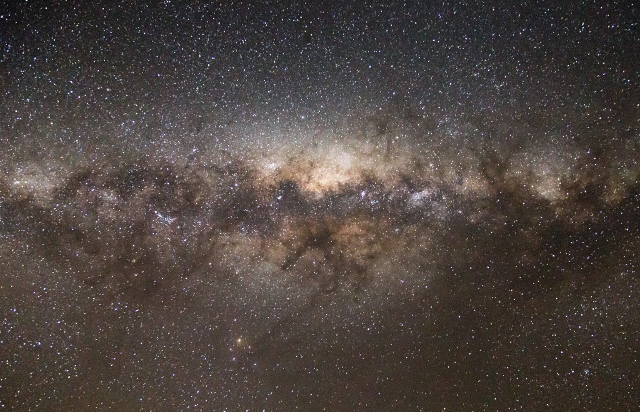New model shows Andromeda Galaxy twice as massive as Milky Way
How do you determine the mass of a galaxy?
An international team of astronomers, including PHAS Post-doc Yin-Zhe Ma, developed a model to much better determine the the masses of galaxies. In their latest publication in the Monthly Notices of the Royal Astronomical Society, they were able to compare the mass of our own Milky Way with that of Andromeda - a neighboring spiral galaxy that is thought to have similar characteristics. To do so, astronomers built computer models to simulate the two galaxies as a dumbbell structure in an expanding universe. By measuring the speed, position, and motion of small galaxies (also known as the satellite galaxies) around these two major galaxies, they can infer the structures and masses of the Milky Way and the Andromeda Galaxy. 
But, here is the surprise. Despite previous understanding being that the two galaxies have comparable mass, they found Andromeda actually has about twice the mass as the Milky Way does. Much of the mass of these galaxies can be attributed to the invisible dark matter, which we still know little about. As pointed out by Yin-Zhe, Andromeda has almost twice as much dark matter as the Milky Way. “We don’t know much about dark matter so this discovery means we’ll get a chance to study it from within our own galaxy.”
With this computer model, the team can also look at the expansion of the Universe. "It was surprising that we could see expansion happening from within our own local group of galaxies that is consistent with expansion on a universal scale," said Yin-Zhe. "This is the first time we’ve captured evidence that cosmic expansion is taking place so close to us."
Something to ponder on the next time you look up in the sky? Perhaps somewhere without as much light pollution as Metro Vancouver...
The study is a collaboration between the University of British Columbia, the University of Edinburgh, Carnegie Mellon University and NRC Herzberg Institute of Astrophysics.
For more information, visit:
- Access the original Publication in Monthly Notices of the Royal Astronomical Society: A dynamical model of the local cosmic expansion. Jorge Peñarrubia, Yin-Zhe Ma, Matthew G. Walker and Alan McConnachie. MNRAS (September 21, 2014) 443 (3): 2204-2222. doi: 10.1093/mnras/stu879. First published online July 29, 2014.
- Access the article in arXiv: A dynamical model of the local cosmic expansion.
- Media release from UBC Public Affairs Office: Astronomers measure weight of galaxies, expansion of universe.